I'm working through Android layout and I know there is this new(er) thing call Blueprint. I'm wondering what the Blueprint view offers.
What I've Tried
1. Added Button and Moved It Around Via Constraints
I don't see really any difference between the two design views (normal and blueprint).
Oh, I did see one difference in the two views.
You only see the outlines of the controls if you are floating above the normal design view (image 1 below). If your cursor is not in the window you don't see them (image 2 below).
Is that the difference?
2. Searched Google's Android Dev Site
I could only find one small bit of information at : https://developer.android.com/studio/write/layout-editor
It said:
the Blueprint view (only outlines for each view)
The blueprint takes up a lot of screen space and I'm wondering if that is all it offers (just outlines of controls)?
I can't see how that is more beneficial than just seeing the "outlines" in the normal design view by floating over view.
Does blueprint offer something additional that I'm not understanding? Is there some other benefit?

